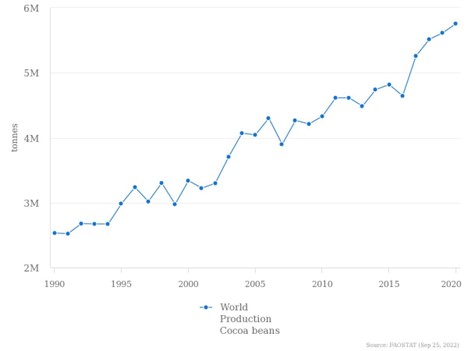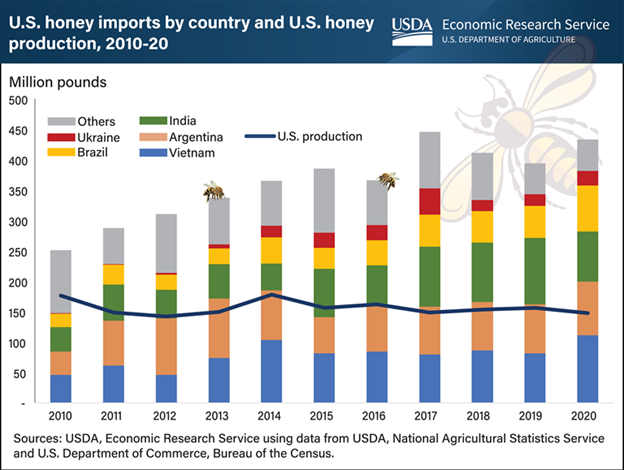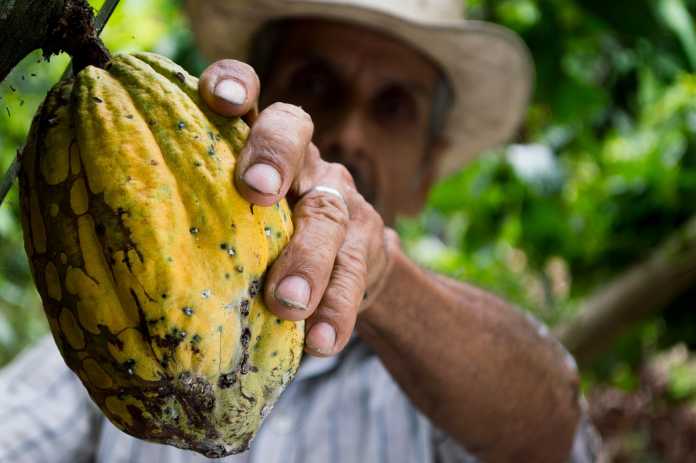The online foodie website, Tasting Table, ran a hyperbolic story claiming climate change threatens the continued ability to produce many popular foods. This is false. Crops in general, including the foods discussed in Tasting Table, are doing well during the present period of modest warming. As agronomy and botany explain, rising carbon dioxide levels and more favorable growing conditions are boosting crop production and should continue to do so in the future.
The author of the Tasting Table story, titled “How Climate Change Is Impacting These 13 Foods,” Sara Klimek, writes:
Climate change may seem like a hot topic in modern political and advocacy discourse, but this scientific phenomenon has real consequences on the food we grow, catch, and harvest every day.
…
As it stands, some major food crops are already seeing the impacts of a changing atmosphere both domestically and abroad. And a whole host of other foods which, while yet to be severely impacted, are standing in harm’s way.
Among the popular foods Klimek claims are being threatened by climate change are coffee, wine; chocolate; shellfish; corn; potatoes; rice, almonds; maple syrup; avocados; and honey.
Klimek writes climate change is impacting shellfish by making the oceans acidic, but, as previously shown in Climate Realism, here and here, for example, this is false. A pH of 7 is considered neutral. Anything below 7 is considered acidic, and anything above alkaline. Ocean pH averages 8.1, which is alkaline. Although climate models suggest the oceans’ surface pH may have dropped from pH 8.2 to 8.1 since 1750, that change was never actually measured. The pH drop is merely a modeled conjecture, and the EPA, itself, considers a pH of 8.1 normal for sea water. There is no data showing seas are becoming acidic, and if seas aren’t becoming acidic ocean acidity can’t be threatening shellfish, as Klimek suggests.
Klimek writes that wine, chocolate, and coffee are threatened because a warming climate is making areas unsuitable for their constituent crops, grapes, cocoa beans, and coffee beans, respectively. Data from the U.N. Food and Agriculture Organization (FAO), discussed in Climate Realism here, here, here, and here, for example, show this is inaccurate. The FAO reports the five highest years of grape production on record have all occurred since 2013. The current record for grape production was set in 2018. The news about cocoa bean is just as good. FAO data show cocoa been production has more than doubled since 1990, setting new records year over year regularly, most recently in 2020 (see the figure, below).

Coffee bean production has also regularly set new records for production and yields across the past 30 years. The FAO reports both coffee yields and production grew tremendously between 1990 and 2020, with both setting records in 2020.
In short, based on the available evidence the earth’s modest warming has been a boon for wine connoisseurs, coffee addicts, and chocolate lovers, alike.
To the extent that honey production is threatened, it is due to colony collapse disorder among (CCD) honey bee populations. As explained in Climate at a Glance: Bees and Climate Change, none of the myriad factors identified by the U.S. Environmental Protection Agency as possibly contributing to CCD have anything to do with climate change. Higher carbon dioxide levels are contributing to a general greening of the earth, including improved conditions for flowering plants which produce the pollen and nectar that pollinators, like bees, eat. As a result, data from the U.S. Department of Agriculture (USDA) shows that global honey production has increased dramatically, even as CCD has become an issue. (See the image below).

Although the Tasting Table article suggests that maple syrup could become a victim of climate change, data show just the opposite is the case. Climate Realism has explored this claim on four different occasions, here and here, for example, and found it is refuted by the data. Data from the USDA shows production maple syrup production has increased 20 percent since 2015, has doubled since 2010, and has tripled since 2005. Indeed, the four highest years for maple syrup in the United States on record were the 2016 through 2019.
Although, as Climate Realism has explored in dozens of articles, cereal crops like corn (maize) and rice are among the crops that have benefitted the most from climate change, three other crops featured in Tasting Table’s story, potatoes, almonds, and avocados have benefitted as well. Data from the FAO show that between 1990 and 2020:
- Corn production increased by 140 percent;
- Rice production increased by approximately 46 percent;
- Potato production grew by an estimated 35 percent;.
- Almond production expanded by 215 percent; and
- Avocado production multiplied by 336 percent.
Klimek points to climate model projections to support her claim of a climate change induced decline for each of the foods she discusses. However, actual production trends for each of the foods examined refute the model projections. Had Klimek bothered to check the data, it should have equally undermined her confidence in the climate models’ claims. Sadly, in climate science, when data and theory collide, alarmists most often jettison the data—fudging it, “adjusting” it or ignoring it—in order to desperately cling to the theory, evidence be damned.




















